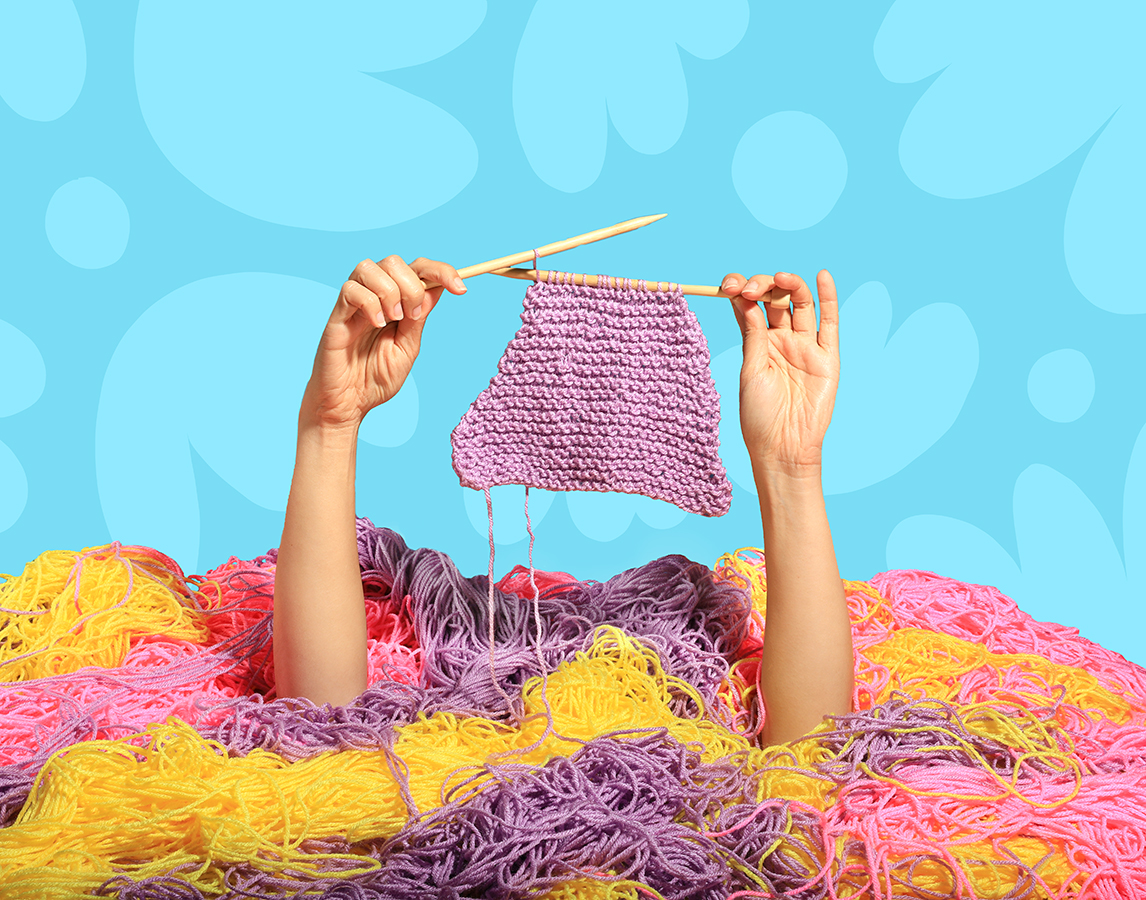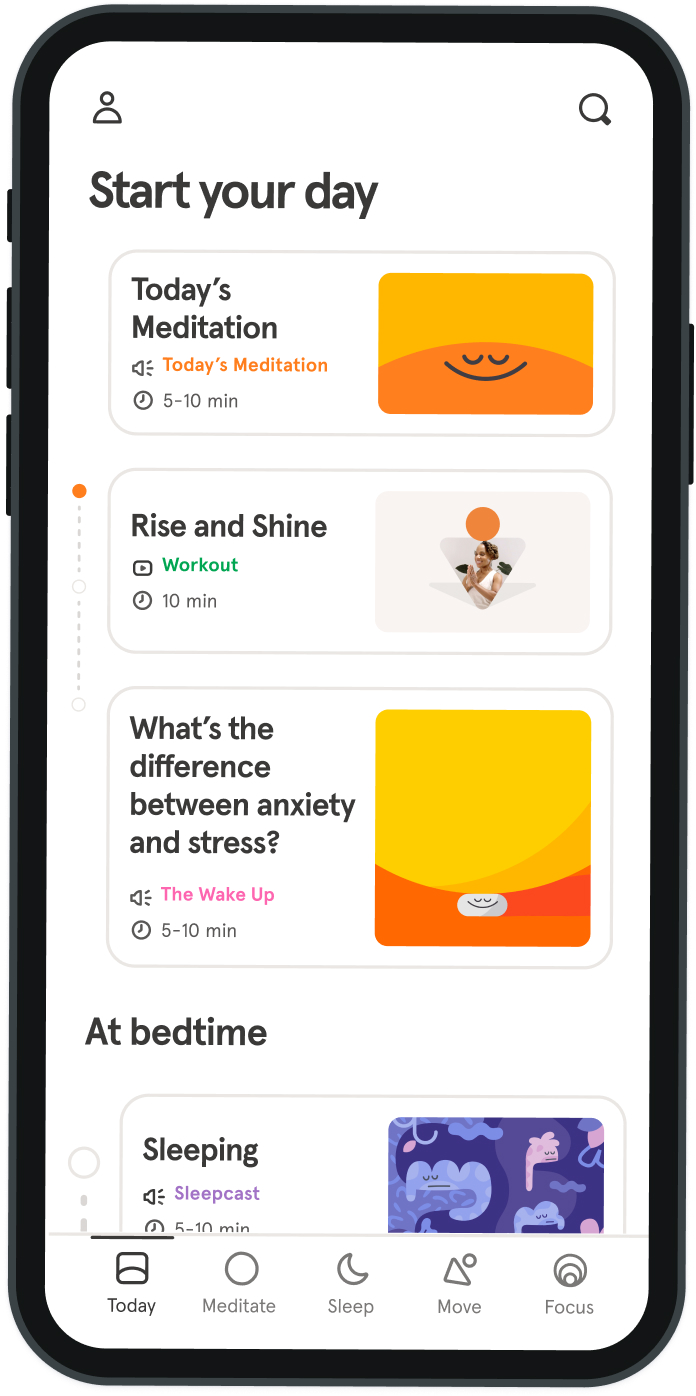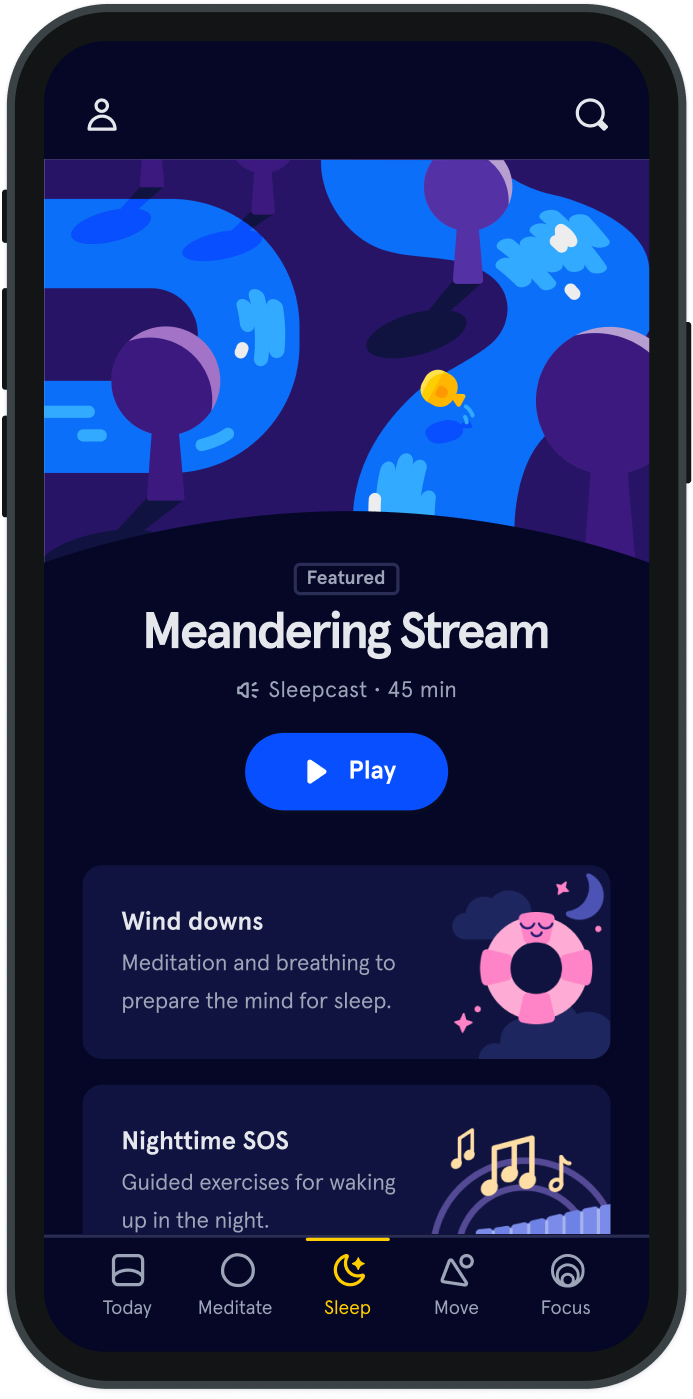How making things helps relieve anxiety
My latest knitting project sits in my lap. It’s a pair of socks, crew-length, in a wool-nylon blend that I won’t need in Los Angeles for another six months, if ever. The yarn cost $26 plus shipping, which is about ten times the price of a pair of cute socks at Target, even before I factor in the number of hours I’ll spend knitting (my best guess is about 20).
But even though it’s slow and not necessarily cost-effective, I love making my own clothes. These socks, for example, fit my feet perfectly. They’re a blend of pink and gold that instantly make me happy. When I look at them, their stitches forming a grid of uniform Vs, I see how far I’ve come as a knitter. And as I work on them—hearing the click of the tiny, metal needles, feeling the slight resistance of the yarn as it moves through my hand—I feel calm. I especially appreciate these moments of peace because I struggle with anxiety. Left with too much unstructured time, my mind wanders straight toward my darkest fears—what if I die in an earthquake today? What if one of my parents has a horrible disease?—and turns them over and over again in an endless cycle that can interfere with my productivity, not to mention my well-being. Therapists call this kind of stagnant thought pattern “rumination,” which, fittingly enough, is the same word for a cow chewing its partially-digested food for the second time. But they also say that making things—whether you’re knitting your own socks, cooking dinner, or even coloring in an adult coloring book—is one good way to step out of it.
Hubscher works with children and adolescents, and she says the act of making things can be especially useful with younger patients. The benefits of crafting go beyond mindfulness too. Charlotte Elkin, behavioral health specialist at the Oscar Center in New York City, says it can also provide a boost of pride and self-confidence (the way I feel when I look at those even stitches on my handmade socks) that can benefit someone who struggles with negative thoughts. It may even help spark social connections, if you share your baked goods with your coworkers, for example, or start a sewing blog. “As long as the activity is not about winning or competing, but it’s more about creating and finding some peace, that’s what’s most important,” says counselor Bill Prasad, of Contemporary Medicine Associates in Texas. “And if you can take whatever skill you use to defeat anxiety and share it with somebody else, that reduces anxiety even more.” Making something engages your right brain, which provides a different outlet for your thoughts, says Elkin, and having different modes of treatment is crucial when addressing anxiety. “It’s important when you’re trying to defeat anxiety to have a lot of tools,” says Prasad. “For example, if your way to defeat anxiety was exercise, and that was your only tool, and then you hurt your back or you hurt your knee, then that tool goes away.” Prasad says one of his own tools for keeping anxiety in check is baking bread, a practice he began about a year ago.
“Doing handwork allows us to experience patience and calm and naturally cultivates mindfulness,” says Courtney Rodrigue Hubscher, a counselor with GroundWork Counseling in Florida. While it might not shield you from having dark thoughts, she says, when you're performing an activity that grounds you in the present moment, you’re more likely to “allow the thoughts to simply pass without reacting to them or becoming distressed or anxious.” Hubscher works with children and adolescents, and she says the act of making things can be especially useful with younger patients. The benefits of crafting go beyond mindfulness too. Charlotte Elkin, behavioral health specialist at the Oscar Center in New York City, says it can also provide a boost of pride and self-confidence (the way I feel when I look at those even stitches on my handmade socks) that can benefit someone who struggles with negative thoughts. It may even help spark social connections, if you share your baked goods with your coworkers, for example, or start a sewing blog. “As long as the activity is not about winning or competing, but it’s more about creating and finding some peace, that’s what’s most important,” says counselor Bill Prasad, of Contemporary Medicine Associates in Texas. “And if you can take whatever skill you use to defeat anxiety and share it with somebody else, that reduces anxiety even more.” Making something engages your right brain, which provides a different outlet for your thoughts, says Elkin, and having different modes of treatment is crucial when addressing anxiety.
“It’s important when you’re trying to defeat anxiety to have a lot of tools,” says Prasad. “For example, if your way to defeat anxiety was exercise, and that was your only tool, and then you hurt your back or you hurt your knee, then that tool goes away.” Prasad says one of his own tools for keeping anxiety in check is baking bread, a practice he began about a year ago. When baking, he says, “you have to slow everything down.” You go to the grocery store, choose your ingredients, bring them home, and follow a recipe, which forces you to pay attention to small details, like how warm your water needs to be to activate your yeast, or how much to knead your dough without overworking it. Prasad experiments with different flavor combinations—lately his favorite base is olive oil, which he pairs with garlic or the rosemary he grows in his own garden—and invites friends over for dinner to taste the results. In fact, all the therapists I spoke with had an outlet like this. Hubscher makes collages and does a craft called strassing, which involves gluing Swarovski crystals to objects like phone cases that she then gives to friends. Elkin likes to rearrange furniture and decorate her home, but she also spends time with her 12-year-old daughter making colorful “slime” with ingredients like glue and cornstarch. It’s a satisfying tactile experience, she says, and an activity she enjoys sharing with her daughter. None of these therapists suggest that you can slime, bake, or bejewel your way out of anxiety, but bringing a crafty activity into your life can yield many joyful moments. And you might get a nice pair of socks out of it, too.



Be kind to your mind
- Access the full library of 500+ meditations on everything from stress, to resilience, to compassion
- Put your mind to bed with sleep sounds, music, and wind-down exercises
- Make mindfulness a part of your daily routine with tension-releasing workouts, relaxing yoga, Focus music playlists, and more
Meditation and mindfulness for any mind, any mood, any goal

Stay in the loop
Be the first to get updates on our latest content, special offers, and new features.
By signing up, you’re agreeing to receive marketing emails from Headspace. You can unsubscribe at any time. For more details, check out our Privacy Policy.
- © 2025 Headspace Inc.
- Terms & conditions
- Privacy policy
- Consumer Health Data
- Your privacy choices
- CA Privacy Notice
